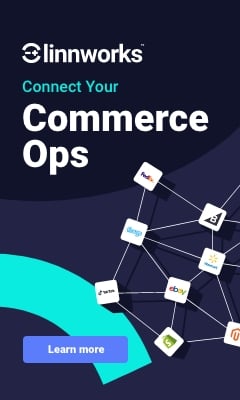Q&A – Gary Whittemore, Head of Sales – EMEA & APAC, RetailNext
RetailNext co-chairs the Retail Think Tank’s (RTT) Retail Health Index (RHI), and in our latest quarterly report we expect that this inflationary-driven downturn could take the retail sector up to three years to recover from based on historical parallels.
Gary, what is your background?
I’ve worked for over 20 years across EMEA and APAC within senior and commercial leadership teams within retail technology, specialising in the shopper traffic insights and customer behaviour analytics space. My focus is helping brands and retailers partner with data-driven businesses with software-as-a-service (SaaS) and cloud-based retail analytics solutions, having worked for a number of businesses, including CACI, Experian FootFall, and ShopperTrak before joining RetailNext.
What are some of the challenges retailers are facing in the current economic climate?
- A crisis of consumer confidence
Retailers are grappling with how to address low consumer confidence and consumer spending power which is being squeezed, not just by inflation and the rising cost of living, but also the impact of interest rate rises. While designed to curb inflation, the recent interest rate hikes – and the potential for more rates rises in the future – are likely to have a significant impact on consumer spending power in the immediate and mid-term. It’s already been predicted that 1million UK homeowners will be paying £500 more in mortgage payment each month by 2026, with millions of renters also being squeezed by record rent increases as landlords pass on mortgage costs to tenants, representing a serious hit to household spending and discretionary spending power.
RetailNext co-chairs the Retail Think Tank’s (RTT) Retail Health Index (RHI), and in our latest quarterly report we expect that this inflationary-driven downturn could take the retail sector up to three years to recover from based on historical parallels. And we also predict that this interest rate-driven ‘third wave’ of disruption will have an arguably more significant, deeper felt and longer-tail impact on customer spending – and so to retailers – than covid and the cost-of-living crisis combined.
- Avoiding a race to the bottom
Another spin-off conundrum of this inflationary and interest-rate driven downturn causing issues for retailers is how to drive demand without eating into already razor-thin margins. Retailers are already taking hits to their balance sheets to shore up demand from incredibly price-sensitive shoppers and protect share of wallet. Just this week, for example, Morrisons announced its eighth round of price cuts this year, and M&S also offered price locks and discounts as it invests to help shoppers in the cost-of-living crisis.
It’s no secret that extended discounting is unsustainable, but in market conditions where retailers are facing rising cost pressures across their manufacturing, supply chains and labour forces, excessive discounting becomes even more of a double-edged sword that, without careful management and strategic vision, will cut deep into profits.
This means retailers are having to carefully consider their offering, appealing to value in a price-focused sense, while still trying to deliver value in terms of customer experiences and providing shoppers with compelling reasons to visit stores, against a backdrop of subdued demand and extreme price and promotions sensitivity.
Tell us about the RTT and the latest RHI – what is it and what are the latest outcomes / index performing?
So, the RTT is an independent board of retail experts co-hosted by KPMG and RetailNext, and each quarter it comes together to produce the Retail Health Index (RHI), which is the industry’s only comprehensive, sector-level quarterly benchmark of retail performance. It assesses sector health for the current quarter as well as predicting how the next quarter will bear out.
The latest data from the RHI predicts retail health will dip -1 index point in Q3 to 69 points, the lowest point since Q3 2020 when the UK was in the midst of tiered lockdown restrictions and about to enter Lockdown 2, and -23 points lower than Q3 2008, at the start of the Financial Crisis and the beginning of the Credit Crunch. It marks Q3 as a significant tipping point, as consumer batten down the hatches and withhold spending in a bid to save to spend for Christmas.
While that might make for stark reading – our expectation at the RTT is that due to inflationary and interest rate pressures, things will get worse before they get better – there are things retailers can be focusing on to navigate their way through the current economic climate. Afterall, this isn’t the first storm – or indeed the first recession – retailers have had to weather, but the long-term nature of this economic shock means the response needs to be both fast and radical.
Retailers need to be sharp in focus, understand their customers better, and get cost and business models right, otherwise failure beckons. To manage these disruptions, retailers will need to know their customers, differentiate themselves from rivals, communicate a strong and meaningful purpose, and execute very well, notably with greater assistance from technology.
How does RetailNext plan to address and solve the challenges retailers are currently facing?
While we often talk about the need for retailers to have a 360-degree view of their customers in order to achieve omnichannel success and deliver performance, the truth is that many still struggle to join the dots between channels, between customers and between the time needed to act upon information to create value. And that’s where RetailNext comes in. By opening up data and analytics we are able to give retail businesses actionable insights in real-time that power performance across their sales channels, from in-store operations and customer experience strategies to leveraging in-store data to power online marketing campaigns.
Who are your customers? / How are retailers using your systems to gain competitive advantage?
A good example is our latest work with DTC fashion brand, UNTUCKit, to help it leverage customer insight and analytics to improve conversions and customer experience delivery in its store estate as well as identifying areas to improve its operational efficiencies within its stores.
By unlocking traffic insight from the RetailNext platform, UNTUCKit was able to establish accurate benchmarks for all its shopper traffic. This helped identify and forecast peak in-store periods so that its managers could more appropriately roster staffing to mirror key conversion times. It also allowed daily tasks to be scheduled so that staff undertook non customer-facing tasks, such as stock checks, during a store’s ‘off-peak’ hours, freeing up time for staff to focus on customer service delivery and adding value to shoppers’ journeys during the store’s ‘power hours’.
Using traffic data also helped UNTUCKit optimise store opening hours for its estate, extending the opening times of outlets in some locations to benefit from late in the day footfall peaks and sales opportunities, whilst also reducing hours for lower traffic stores, resulting in labour cost and operational savings.
And, by benchmarking traffic data, UNTUCKit was then able to establish clearly defined and structured KPIs based on industry trends and its wider store estate performance. This meant that it could then better identify and reward top performing staff, as well as making data-based decisions and plans to improve any underperforming stores.
“The traffic data enables us to determine whether we are maximising the opportunity in front of us. When the customer shows up, are we performing at our best? Are we converting? Are we upselling? The data point is a very important way to measure that performance so we can maximise what we are due to receive from any of our store fronts in any given city.” Brent Paulsen, Managing Director and Head of Retail, UNTUCKit
What challenges and opportunities do you see in retail for the remainder of 2023?
With the predicted long-term and profound changes to consumer behaviour, we expect to see the retail sector will becoming even more polarised by the end of 2023 and beyond, as the ‘squeezed middle’ is edged out by the growth in discount retailing.
Currently, discount retailers’ market share accounts for 20% and is growing rapidly, which will give way to value-led retailers at one end of the sector, and experience-led retailers at the other. This squeezed middle, gripped by declining margins and dwindling demand, will be less able to invest to respond to the massive changes in the way people now shop, less able to offer and demonstrate value and a strong proposition, while also being constrained by an inability to respond quickly.
Pressure on pureplays, already burdened by rising customer acquisition and engagement costs, a rise in store traffic, high returns and infinite online competition that has put up their operational costs, will force them to reinvent or struggle to compete.
The winners and losers, both across and within categories, will be defined by their willingness to change, how much capital they have available (a big question mark hanging over any retailers heavily indebted by private equity ownership and now with higher debt servicing costs), and organisational structures that enable them to collaborate, a critical success indicator in omnichannel retail.
Visit them online here or connect with Gary here.














